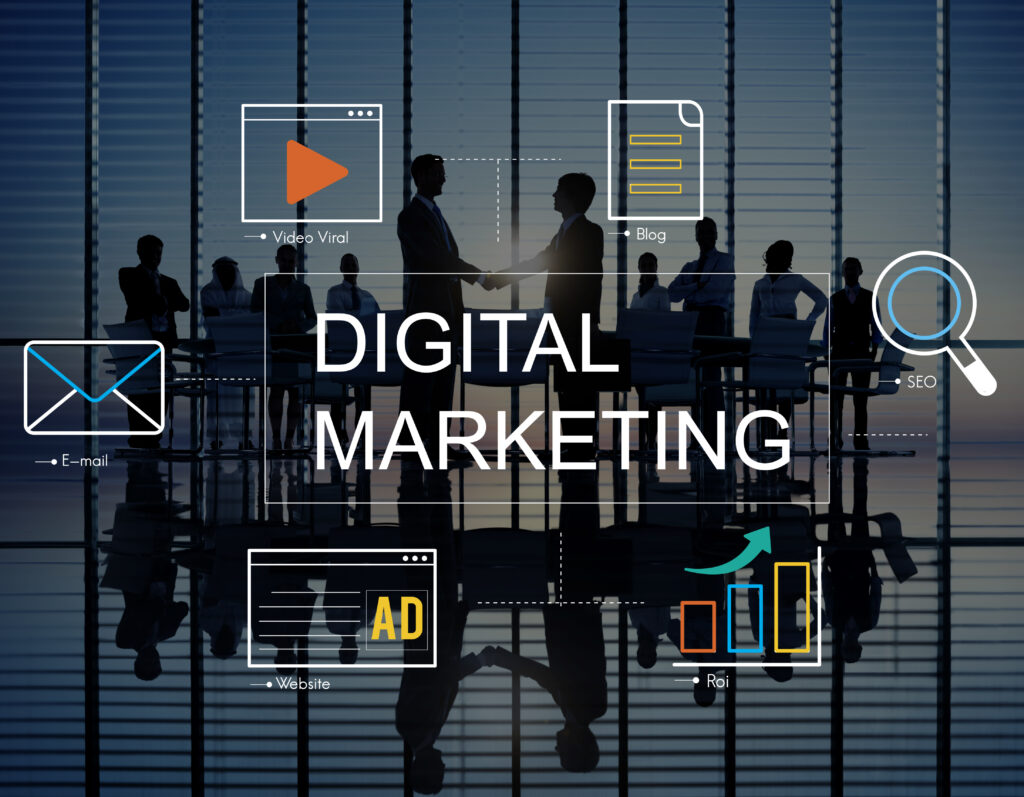Table of Contents

Introduction :
Businesses have to interact with their customers online, where they spend the majority of their time, in the fast-paced digital world of today. In order to effectively sell their goods and services, businesses of all kinds now depend primarily on digital marketing. Digital marketing is more successful, identifiable, and economical than traditional marketing since it uses online platforms to quickly connect with a worldwide audience. This article will walk you through the fundamentals of digital marketing.

What is Digital Marketing ??
Any type of advertising that makes use of electronic devices or the internet is referred to as digital marketing. To communicate with both present and potential clients, businesses use digital platforms like websites, social media, email, and search engines. it enables targeted, interactive, and data-driven campaigns, in contrast to traditional marketing, which depends on print advertisements, billboards, or TV commercials.
Typical Digital Marketing platforms include:
Search Engine Optimization (SEO):Making changes to the site in order to improve its ranking on search engines such as Google.
Social Media Marketing: Interacting with audiences through social media sites like Facebook, Instagram, and LinkedIn.
Email Marketing: Delivering tailored communications straight to prospective customers.
Pay-Per-Click Advertising (PPC):Purchasing advertisements popping up on social media or search engines.
Because developments in technology and consumer habits emerge, it is dynamic and ever-changing.

Key Components
The area of digital marketing is vast and includes a variety of tactics and resources. The primary elements are as follows:
Search Engine Optimization ( SEO ): raises your website’s exposure in natural search results.
Content Marketing: Producing informative material (blogs, videos, infographics) to draw in and keep viewers is known as content marketing.
Social media marketing : Social media is the process of using social media platforms to increase consumer interactions and brand exposure.
Email Marketing: Email marketing is the process of using targeted emails to nurture prospects and uphold client connections.
PPC Advertising :PPC advertising is the practice of rapidly increasing traffic by purchasing advertisements on websites such as Facebook Ads and Google Ads.
Affiliate Marketing: Collaborating with affiliates who market your goods in exchange for a commission is known as affiliate marketing.
Influencer Marketing: Working together with influencers to use their following to promote brands is known as influencer marketing.
Retargeting Ads: Managing the internet media presence and reputation of your brand is known as online public relations.
Your objectives, target audience, and budgetary constraints will all influence the strategy you choose.

How Digital Marketing Will Help Businesses Get Started :
It may seem intimidating to begin your digital marketing journey, but following these steps can help:
Establish Specific Objectives: Clearly state your goals, including sales, lead generation, and brand exposure. Recognize Your Audience Examine the tastes, habits, and problems of your target market.1
Pick the Correct Channels: Pick the sites where your target audience is most engaged.
Provide High-Quality material: Craft audience-specific, interesting, and pertinent material.
Make use of analytics to track your efforts and make data-driven strategy adjustments.
Start Small and Scale: Launch campaigns that are manageable at first, then expand as you see what works.
The secret to success is consistency and learning from outcomes. May seem intimidating to begin your journey, but following these steps can help:
Current Trends
it is always changing. The following trends are influencing the industry:
Artificial Intelligence (AI): AI-driven data analysis, chatbot, and customization technologies.
Voice Search Optimization :Content adaptation for voice-activated searches using smart speakers is known as voice search optimization.
Dominance of Video Content: Live streaming and short-form videos are becoming more and more popular.
Personalization: Customizing marketing messaging to each user’s preferences is known as personalization.
Interactive Content: To keep people interested, employ polls, quizzes, and AR/VR experiences.
Sustainability marketing: Companies that highlight environmentally friendly methods to appeal to consumers that care about the environment.
Keeping abreast of trends keeps your marketing current and successful.
Conclusion:
With its potent tools for online audience outreach, engagement, and conversion, it has completely changed how companies interact with their clientele. Adopting digital marketing techniques may spur development and create enduring connections for any size organization, regardless of size. Start by selecting the appropriate channels, establishing specific goals, and comprehending your audience. it has the potential to become your most valuable asset if you learn and adapt continuously.
Rahul Maurya
RKM-MONK
My domain : navajowhite-crab-991221.hostingersite.com